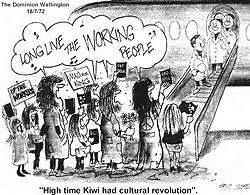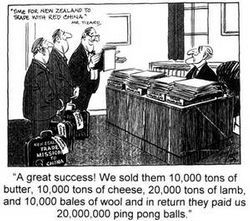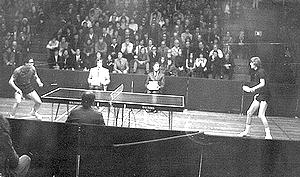Top People |
| Men's Singles Champion |
A R Tomlinson (A) |
| Women's Singles Champion |
Miss A D Stonestreet (A) |
Ranking List |
Men
- A R Tomlinson (A)
- Ling Nan Ming (C)
- G B Murphy (H)
- R E Lee (H)
- J R Morris (NL)
- B T Cross (C)
- T J O'Carroll (NL)
- Loke Sim Wong (C)
- J Armstrong (C)
- G J Jennings (A)
Women
- Miss A D Stonesteet (A)
- Miss Y M Fogarty (O)
- Mrs N Traill (NL)
- Miss K A Fraser (A)
- Mrs T E May (C)
- Miss B A Taylor (C)
- Miss J E Brown (HV)
- Mrs C E Tadema (H)
- Mrs J G Orr (ST)
- Mrs V M Sneddon (H)
Under 18 Boys
- R E Lee (H)
- K M Palmer (A)
- M W Burrowes (C)
- M G Saunders (A)
- B M Attwood (H)
- G J Rhind (C)
- R C Blair (FR)
- R J Moore (A)
- W Adamson (C)
- G P Rau (FR)
Under 18 Girls
- P A Marks (C)
- J G Morris (C)
- P A Hemera (FR)
- D J Looms (ML)
- L B Smith (BP)
- C L McGregor (W)
- C J Hutton (A)
- G A Laison (BP)
- A M Brackenridge (NL)
- K N Wilson (SC)
|
| Executive Committee |
| A R Harding (Chair), R
J Menchi (Dep Chair), Miss J E Brown, Mrs V E Muirhead,
K L Pointon, L E Bouzaid, J W S Stevenson, P F Bargh, R W Perks, R J Magee, K C
Wilkinson (Secretary), A R Zillwood (Treasurer). |


|
History
in the Making: Team from China Visits NZ
This event is burned permanently in the minds of all those who were involved in it,
witnessed any part of it, or were even simply living in New Zealand at the time and were
unable to escape the media frenzy surrounding it whether they wanted to or not.
The Peoples Republic of China opening its arms to the world via the sport of table tennis
had been world news since April, 1971 when several teams from western nations were
invited, seemingly on impulse, to visit China after the World Championships. A visit to
New Zealand by a Chinese team was confirmed in late 1971 and from then until well after
they left on 22 July the story was rarely out of the headlines. Three very separate issues
were the main sources of interest:
- Players from the world’s top table tennis nation were to be on display in this
country.
- The visit could pave the way to improved diplomatic and trade relations with China.
- NZ’s support for Taiwan (unrecognized as a separate nation by China) would have to
be carefully explained and in the event led to an amicable agreement that there should be
only one China and that any conflict between Taiwan and the People’s Republic must be
averted.
The party arrived on 16 July. They were scheduled to play a test match in Auckland that
very night, despite having travelled from Singapore and gone 40 hours without proper
sleep. “Friendship overcomes tiredness – we’ll play,” they cabled in
advance, to the relief of match organizers who had pre-sold 2,000 tickets.
“Friendship first, competition second” was the recurring theme of the tour.
The table tennis was scintillating – as expected. The doubles exhibition matches
surpassed even that of the spectacular Swedes in 1970. The group moved on to Lower Hutt
and Christchurch for two more tests and then to Dunedin for a contest against the South
Island. A flight back to Auckland and the tour was over.
Communication Problems
It had been finally confirmed in May that the tour was definitely on and would take place
from about 17 July. Originally it was indicated that the tour party would consist of five
players and two officials. In May the number was dramatically increased to about 19,
including eleven players, a management team, interpreter, coaches, medical personnel and
journalists. But as late as 6 July neither the final number (21), nor the exact date of
arrival (16 July), nor even the point of arrival (Auckland) had been confirmed. It was
only the intervention of NZ’s Foreign Affairs Department that enabled this essential
information to be obtained and travel and accommodation arrangements finalized. The
patience of NZTTA Chairman Alf Harding and Secretary Ken
Wilkinson had been tried to the limit.
New Zealand Breweries sponsored the tour and provided all meals and accommodation in their
hotels.
Popular Tourists
The turnout of the NZ Chinese community was phenomenal – never before has this group
been drawn together so cohesively and brought out in such numbers. Red flags and red books
were waved to welcome the party with choruses of “Long Live the Working People”.
And yet, the most enduring memories dwell not so much in the welcomes, or the table
tennis, but in the peripheral events. One such was a visit by the entire party to a farm
near Wellington owned by former All Black Ken Gray. The tourists were
intrigued by sheep-shearing, marveled at the skills of a sheep-dog at work, rode horses,
and were awed to meet a famed rugby player. They also wanted to see “hundreds more
sheep” so hasty arrangements were made for a visit to a Harewood sheep farm while
they were in Christchurch.
Also arranged hastily and informally was an unofficial table tennis demonstration and
social evening at Victoria University Union Hall. It was organised by the NZ-China
Cultural Society and Asian Studies Society of Victoria University and for some was the
best remembered part of tour. It included a Maori welcome and Maori and Chinese singing
with the evening hosted by Professor James Bertram who had met Mao
Zedong in China. The event almost upstaged the Parliamentary reception earlier in
the day attended by the Prime Minister and a bevy of other ministers and MPs.
The full touring party within New Zealand included of course NZ officials and the New
Zealand players. Buoyed by the collegiality within the group, a nimble-fingered Yvonne
Fogarty rode the bus embroidering book-marks as a gift for each member of the
Chinese party.
Probably most charming of all was a serendipitous meeting between the tourists as they
were about to leave Christchurch and a class of 12 year old students from Freeville School
on a field trip studying flight systems. They were invited to visit the Chinese group in
their departure lounge where they communicated with sign language, handshakes and lots of
smiles.
Protests Muted
During and after the tour a number of newspaper advertisements, angry letters to the
editor and talk-back calls demanded to know why there had been almost no protest.
“Mainland China has invaded Tibet, ostracized Taiwan, their human rights record is
deplorable – why hasn’t New Zealand turned out in big numbers to protest?”
It didn’t happen. Apart from one or two isolated incidents, such was the goodwill
generated by the vibrant tourists and their obvious wish to make friends here that all
else was forgotten.
Landmark Event
China was now back in the world sporting arena. Another team visited New Zealand in 1980.
China/NZ relations improved from this point, although somewhat slowly. This visit to New
Zealand by the Chinese delegation from 16-22 July, 1972 remains the most important
international table tennis event ever to take place in this country.

Chai Lan Sun (China) V Richard Lee (China won
22-20)
|
Ramon La
Varis
A man who went from total obscurity to instant renown as a direct result of the Chinese
visit was Aucklander Ramon (Ray) La Varis. As the operator of an
import/export business he had made several visits to China, spoke the language, and
through his contacts was able to communicate with the Chinese Table Tennis Association. He
had first issued an invitation for a Chinese team to visit in 1967, long before anyone had
heard of “Ping Pong Diplomacy”.
He also maintained links with the New Zealand Government and was authorized to act on
their behalf when lobbying for the team visit and on other matters regarding NZ/China
relations. After the tourists had returned to China it was revealed that most of the
non-players in the Chinese delegation were either politicians or senior foreign ministry
officials.
Ray La Varis travelled with the group throughout the tour, was liaison
officer and main spokesman for the entire entourage and presided over all the events,
sporting and formal. He was able to put to good use his deep understanding of Chinese
culture. The value of his contribution cannot be underestimated.
He had served a brief term on the NZTTA Executive and later stood successfully for the
Taupo seat in Parliament.
The Test Matches
The eleven players in the Chinese delegation included both the No 3 man and No 3 woman in
China (Chou Lan-sun and Cheng Yu-shan, respectively). The others were top provincial
players. The New Zealand players selected to face them were Anne Stonestreet,
Yvonne Fogarty, Neti Traill, Gary Murphy, Richard Lee and James Morris.
Thelma May, Loke Sim Wong and  Ling Nan Ming (Pictured) joined
Yvonne Fogarty for the South Island contest. Ling Nan Ming (Pictured) joined
Yvonne Fogarty for the South Island contest.
When James Morris beat Chou Chih-chun in the Lower Hutt test, the
audience erupted and headlines blazed throughout the country with “Morris a
Sensation” a typical example splashed across the sports page in the Dominion. James
indeed played very well in the deciding third game, racing to an 18-12 lead with a
succession of superb winners. He then struggled against serve but held on to win 21-19.
The only other player to register a win was Yvonne Fogarty, who beat
Chang Tsui-chi in the China/South Island contest. There could have been an element of
“Friendship first” in this result as Yvonne had lost to the same player in an
earlier test match. But the New Zealand players were not over-awed by the competition and
performed creditably overall.
Each contest was followed by friendly mixed doubles matches with China/NZ pairings facing
each other, and the climax was the all-Chinese exhibition singles and doubles matches
– undoubtedly the highlight of the evening.
The matches in Christchurch were televised live, occupying an hour and a half of prime
time.
More Table Tennis on Television
The early 1970s was a boom period for table tennis on free-to-air television. The
exhibition play by the touring Swedes in 1970 and the NZBC sponsored tournament in 1971
set the ball rolling on TV screens. Then this year came the China tour, a television
series organized by Canterbury TTA featuring our top players, and another NZBC sponsored
tournament showcasing NZ’s top four ranked male players: Alan Tomlinson, Ling
Nan Ming, Gary Murphy and Richard Lee. The winner, 4th ranked Richard
Lee, was destined to be NZ champion and to top the rankings in 1973 and 1974.
Canterbury Triumphs in NZ Teams Championships
Canterbury came away from the NZ Championships teams events with a double crown –
winning both the men’s and women’s A Grade competitions. The triumph took place
on their home territory in Christchurch’s Cowles Stadium. It was the men’s first
win ever but they made up for it by winning again in 1973 and 1974 to make it three in a
row. It was the women’s third win and first since 1964.
Drama in the individual events included a remarkable comeback by 38 year old Alan
Tomlinson to win the men’s singles for his fourth title (the first was in
1959), and a second successive women’s championship to 18 year old Anne
Stonestreet who also took out the women’s and mixed doubles. Both players
had also won the North Island singles titles.
|
Senior
Training Squads Introduced
On the urging of the National Director of Coaching (Trevor Flint), our
top players were assembled for a three-day training camp in Christchurch in May. While top
ten round robin tournaments had been played in the past, this was the first time coaching
and training were included. Match play also took place, some of which was filmed for
television.
“Please Come to Asian Federation Championships,” begs Indonesia
In highly unusual circumstances, a New Zealand team took part in the 11th Asian Federation
Championships in Indonesia in early December.
The situation was highly political – the Peoples Republic of China had set up the
Asian Table Tennis Union, effectively in opposition to the existing Federation, and the
entry for the Federation’s Championships had shrunk to six, possibly only four. New
Zealand had declined an invitation on account of the cost but the hosts, Indonesia,
offered free accommodation and said they would also pay the cost of air travel for five
players and a manager. It was an offer difficult to refuse but it left only a week to
select a team and arrange travel papers and inoculations.
Neti Traill (pulled from her hospital bed where she was preparing for
surgery), Anne Stonestreet, Richard Lee, Alan Tomlinson and Gary
Murphy were selected, accompanied by Ken Wilkinson.
We should never have gone. The whole process was rushed and the trip jinxed from the
start. The initial flight was delayed and a rapid transfer in Sydney to a direct flight to
Jakarta resulted in the entire party’s luggage going missing. It was not recovered
until two days after play concluded and the team was on the way home. They had to play in
borrowed clothing (the men were decked out in floral shorts) and all except Richard
Lee had to use borrowed bats. New Zealand finished last.
The only other countries to participate were South Vietnam, South Korea, Cambodia and
hosts Indonesia.
A trip to forget.
Team Announced for 1973 World Events
Before year’s end the National Selection Panel announced that only a women’s
team would be officially selected for the 1973 World and Commonwealth Championships, and
named Yvonne Fogarty and Anne Stonestreet for that team.
A bevy of strong male players, some of whom were already overseas, offered to pay their
own way and represent New Zealand at the Worlds only. Approval for this was given. One of
them, former Australian international, Geoff Jennings, was also appointed
manager/coach of the women’s team at both events.
Umpires Association Formed
A special meeting was called during the NZ Championships of all qualified umpires and
other interested people to discuss the formation of a New Zealand Umpires Association. A
Committee of six was elected, with Keith Pointon its inaugural President.
The Association’s brief was to co-ordinate interpretation of the rules, raise the
standard of umpiring and encourage more candidates to sit the provincial umpires
examination.
|